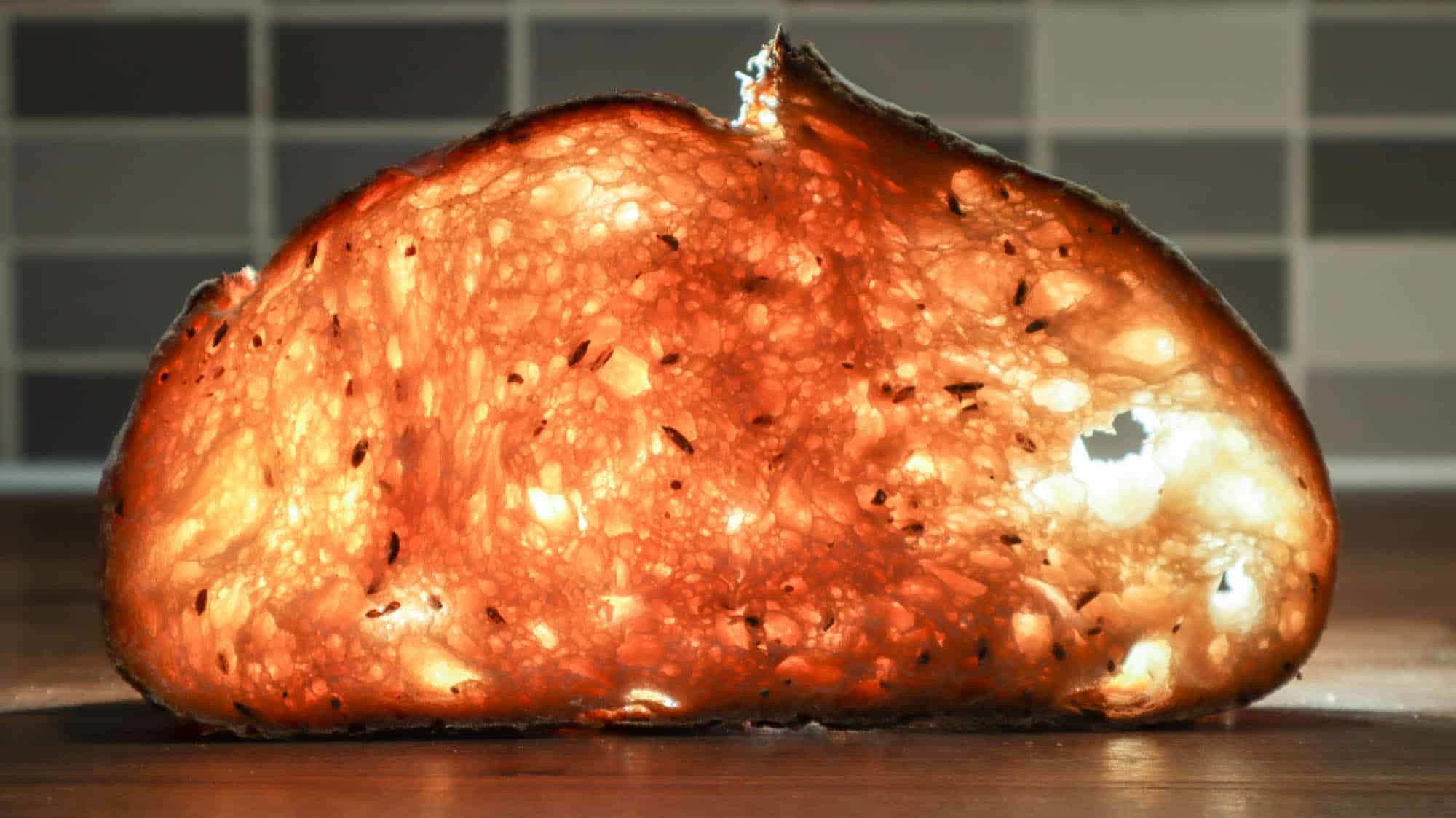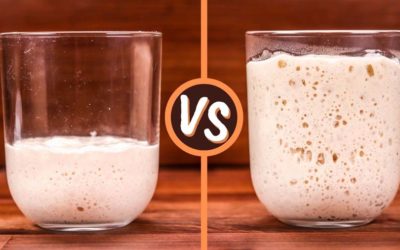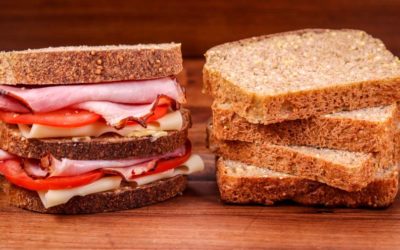Using more water in your dough will result in those bubbles that everyone is chasing.
I personally do not make bread like this very often, but it has its place. The more water is added the more difficult it becomes to develop gluten. That is why we are using the autolyse method which helps hydrate the flour and make the gluten development easier for us. The long cold proof gives this bread an intense flavour.
Remember that every sourdough starter is different and the conditions in every kitchen are different. Take the given fermentation times with a grain of salt as your starter may be more or less active and your kitchen may be cooler or warmer, so your proofing times may vary.
If your dough is very loose, then add more folds. Just space them evenly throughout bulk fermentation.
Ingredients
For the levain –
10g (0.35oz) sourdough starter
100g (3.5oz) strong white bread flour
100g (3.5oz) water at room temperature if your kitchen is around 20 – 22C (68 – 72F). If it is warmer or cooler, then adjust the water temperature by 1 – 2C (2 – 4F) up or down.
For the main dough –
300g (10.6oz) strong white bread flour
220g (7.75oz) water at room temperature if, your kitchen is around 20 – 22C (68 – 72F). If it is warmer or cooler, then adjust the water temperature by 1 – 2C (2 – 4F) up or down.
8g (0.3oz) fine sea salt
10g (0.35oz) caraway seeds *optional
To learn more about dough temperature control when using a preferment click here.
Method
- Make the levain by mixing all the levain ingredients and leaving for 12 – 16 hours to ferment.
- Make the autolyse. Mix the rest of the flour, water and, also the seeds to a shaggy mass until you do not see any dry flour. Leave to hydrate for 2 – 3 hours.
- Add your levain to your autolysed dough.
- Knead using the stretch & fold method for around 5 minutes.
- Spread the dough out, sprinkle with salt and rub it in with a wet hand.
- Keep kneading using the stretch & fold method for another 5 minutes or until you feel good gluten development.
- Place the dough ball in a bowl and take the temperature. Desired dough temperature 23 – 24C (73 – 75F). If your dough is cooler or warmer, then adjust the proofing time up or down accordingly.
- Proof for 1 hour.
- Fold #1.
- Proof for 1 hour.
- Fold #2.
- Proof for 1 hour
- Preshape.
- Rest for 30 minutes.
- Shape the loaf and place it in a well-floured basket.
- Refrigerate for up to 18 hours.
- Once ready pre-heat your oven and your baking vessel to 240C (460F) no fan.
- Straight from the fridge put your dough in your pan, score and bake with the lid on for 20 minutes.
- Remove the lid and continue baking for another 20 minutes. Your oven may be more or less powerful than mine, so keep an eye on your bread to get a perfect bake.
Watch the video here



